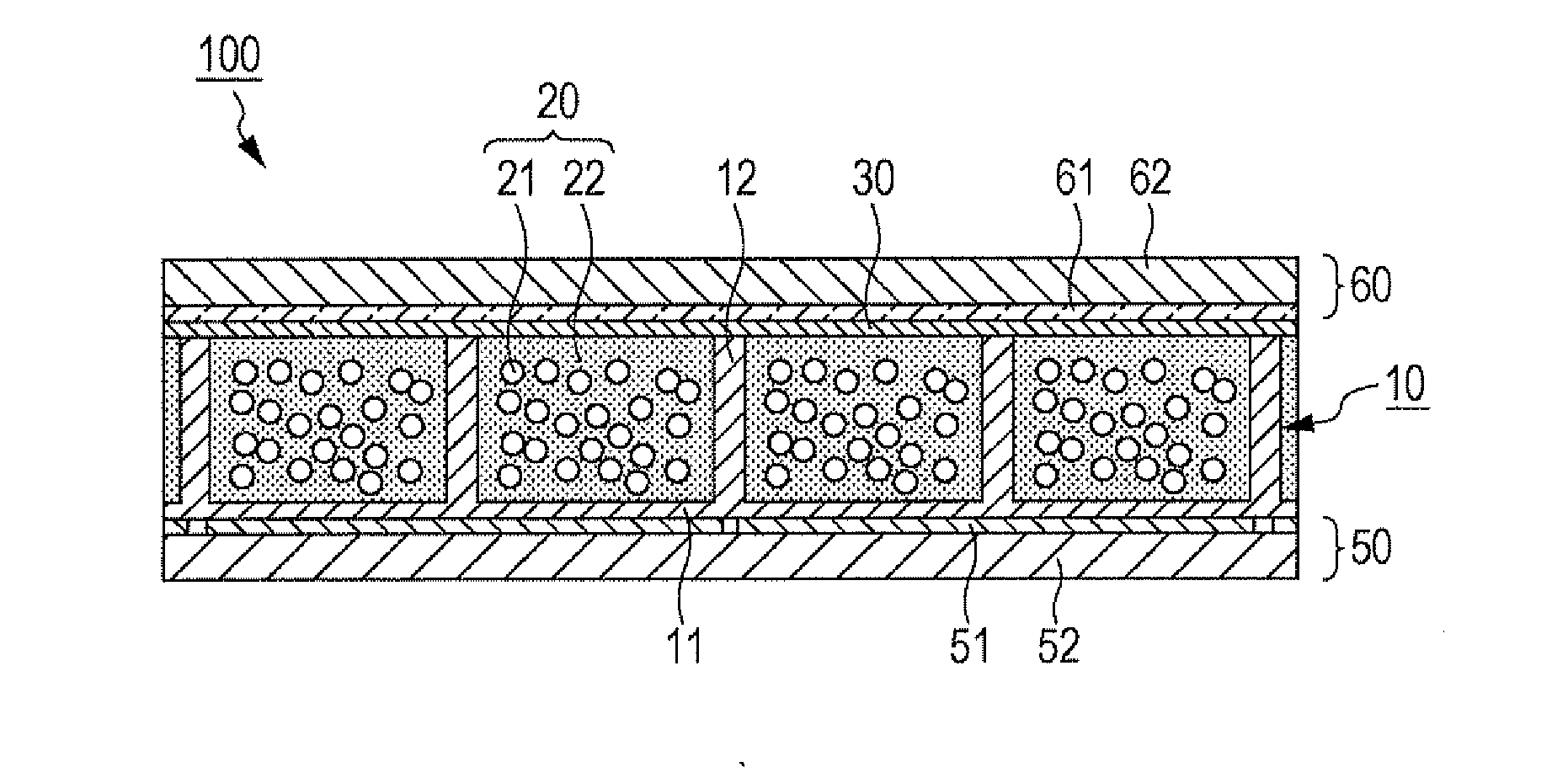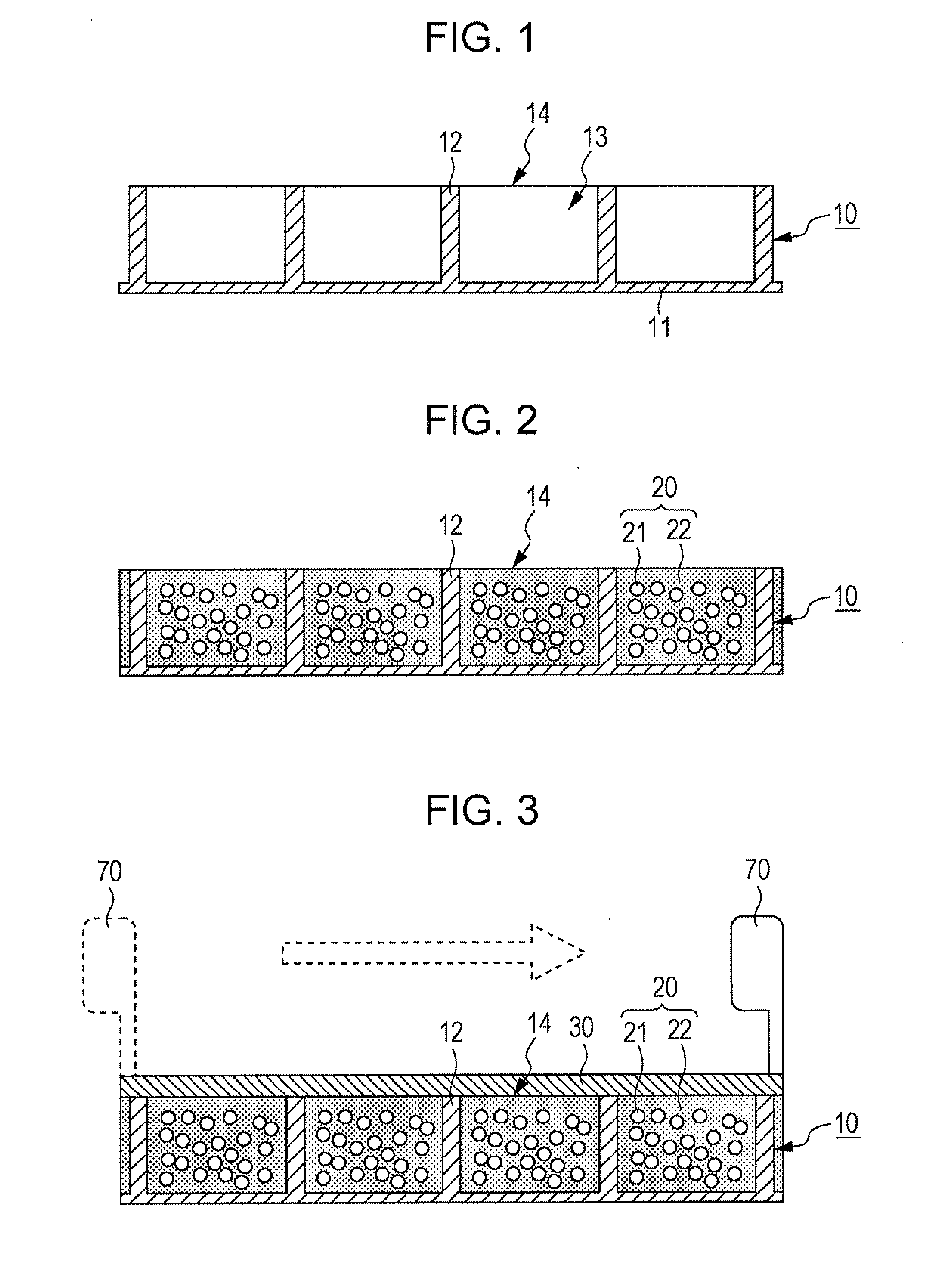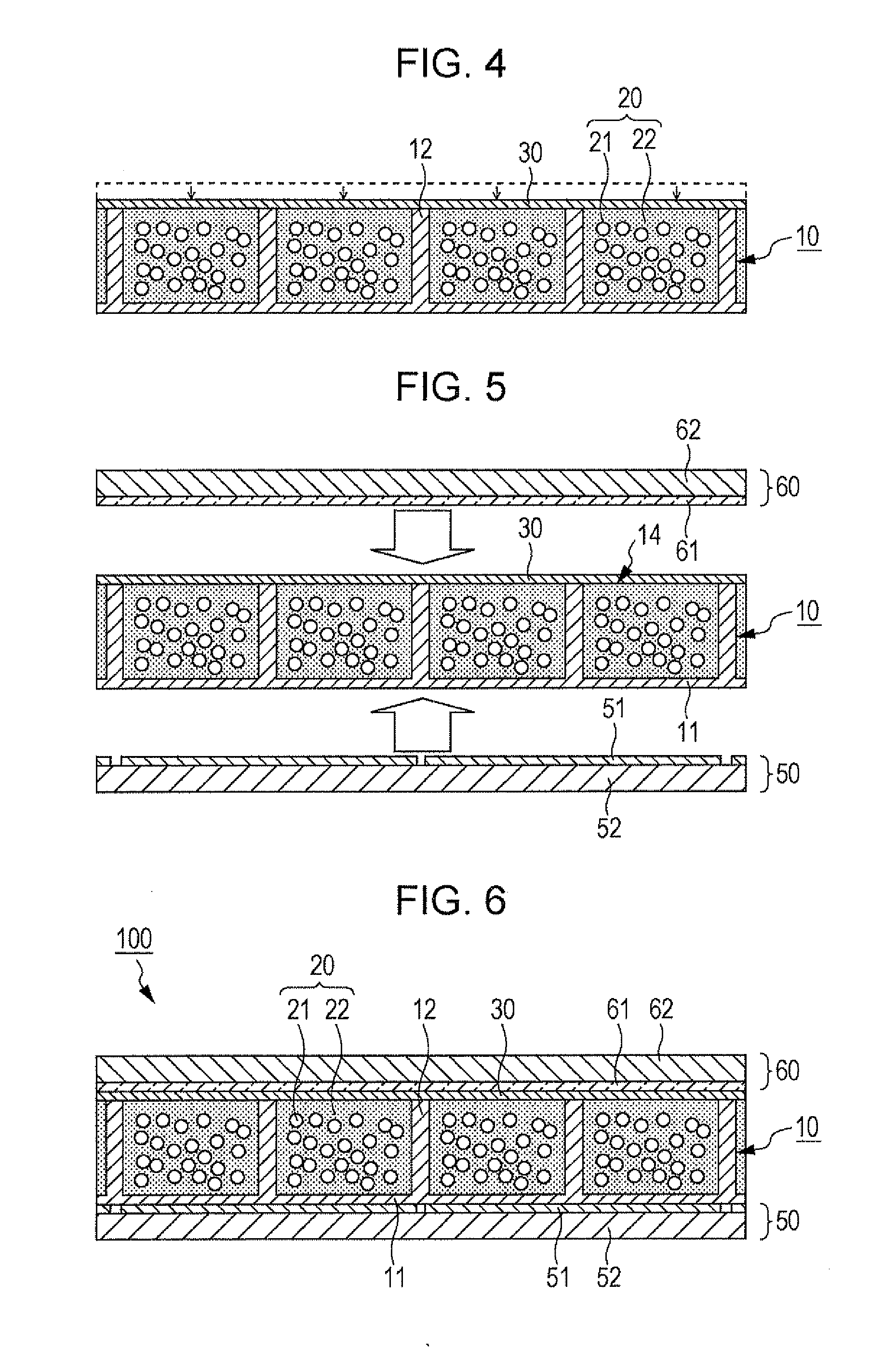Method for manufacturing electrophoretic display apparatus
a technology of electrophoretic display and electrophoretic gel, which is applied in the direction of liquid surface applicators, instruments, coatings, etc., can solve the problems of limiting the choice of solvent, difficult to synthesize fluorine-containing solvents, and high cost of materials, so as to reduce the cost of materials, high versatility and inexpensive
- Summary
- Abstract
- Description
- Claims
- Application Information
AI Technical Summary
Benefits of technology
Problems solved by technology
Method used
Image
Examples
first embodiment
I. First Embodiment
[0033]FIGS. 1 to 6 are diagrams illustrating the method for manufacturing an electrophoretic display apparatus 100 according to an embodiment of the invention.
[0034]As illustrated in FIG. 1, a structure 10 is first prepared to have a plurality of cells 13 spatially defined by partitions 12. (Hereinafter this structure is referred to as a cell matrix 10.) This cell matrix 10 has a flat substrate 11, and the partitions 12 are arranged on either side of this substrate 11. As illustrated in FIG. 7A, these partitions 12 divide the space on the substrate 11 to provide the cells 13. The partitions 12, on their plan view, are in a form such as a square grid. The cell matrix 10, which has the partitions 12 constituted as above, is made from a resin material such as epoxy resin, acrylic resin, urethane resin, melamine resin, or phenol resin, a ceramic material such as silica, alumina, or titania, or any other appropriate material.
[0035]FIGS. 1, 7A, and some other drawings i...
second embodiment
II. Second Embodiment
[0052]In the above-described first embodiment of the invention, a thickening agent may be added to the water-soluble polymer to increase the viscosity of the sealing coating. The second embodiment focuses on this point.
[0053]The following describes an exemplary combination, PVA chosen as the water-soluble polymer and boric acid (H3BO3) chosen as the thickening agent. A molecular structure of boric acid is illustrated in FIG. 8.
[0054]In the process of preparing the sealing solution, an aqueous solution containing PVA at a concentration in the range of 3 [wt %] to 40 [wt %] (hereinafter also referred to as the PVA aqueous solution) is combined with an aqueous solution of boric acid with the target concentration of boric acid set in the range of 2 [wt %] to 5 [wt %]. The aqueous solution of boric acid contains borate ions. As illustrated in FIG. 9, in the PVA aqueous solution borate ions link molecules of PVA (i.e., turn the PVA aqueous solution into a gel). This g...
PUM
| Property | Measurement | Unit |
|---|---|---|
| temperature | aaaaa | aaaaa |
| optical transparency | aaaaa | aaaaa |
| viscosity | aaaaa | aaaaa |
Abstract
Description
Claims
Application Information
 Login to View More
Login to View More - R&D
- Intellectual Property
- Life Sciences
- Materials
- Tech Scout
- Unparalleled Data Quality
- Higher Quality Content
- 60% Fewer Hallucinations
Browse by: Latest US Patents, China's latest patents, Technical Efficacy Thesaurus, Application Domain, Technology Topic, Popular Technical Reports.
© 2025 PatSnap. All rights reserved.Legal|Privacy policy|Modern Slavery Act Transparency Statement|Sitemap|About US| Contact US: help@patsnap.com



